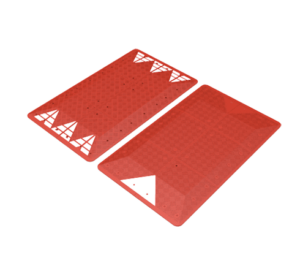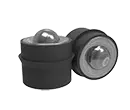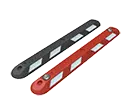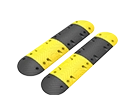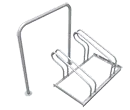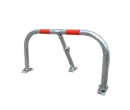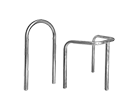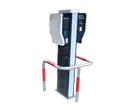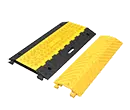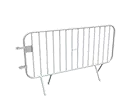Take 5 minutes to learn about speed hump design criteria!
Transportation engineers never fail to amaze us. After all, they are the sole reason there has been a reduction in traffic crashes and accidents over the past few years. From speed humps to wheel stops, many traffic control devices have been created.
In this short guide, learn anything you need to know about the dimension, designs, and standards of speed humps. Without any further ado, let’s get started.
Do you want to know more about this topic? We also have an article to discuss everything about speed humps.
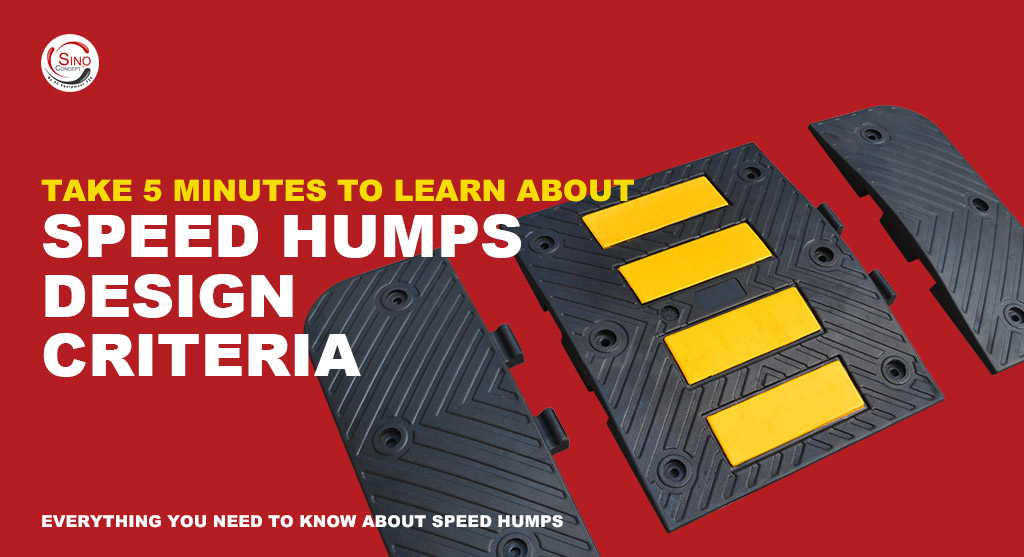
Facts you need to know about UK speed hump dimensions
Let’s start with the basics first. Have you ever thought about the difference between the speed hump and speed bumps dimensions? Well, here it is; both are quite similar, with their height, length, and width differences.
Here are some of the lesser-known facts:
- Speed humps should have a minimum height of around 25 mm, and they cannot exceed more than 100 mm. On the other hand, speed bumps can have more than 100 mm in height to act aggressively to slow vehicles down to five miles per hour (mph). The low height of speed humps makes them less aggressive and provides a smooth transition for most vehicles. Usually, they can reduce the speed to around 20 mph.
- Speed humps must have a minimum length of 900 mm. These speed humps cover a larger road path and don’t act as a gradual ramp. Motorists can spot them and will only feel a slight raise/bump upon interacting with speed humps. On the other hand, abrupt shifts occur with speed bumps.
- Each section of the speed hump must be at least 250 mm long, with a spacing of around 20-150 meters. These dimensions are as per UK law and regulated explicitly by the Highways (road bumps) 1999. Municipal officers must follow all the stated laws to obtain the maximum benefit in high traffic safety.
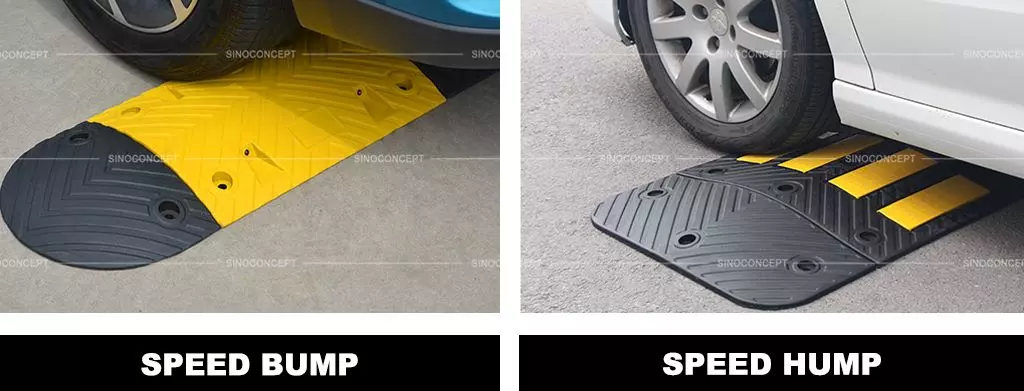
Know more about speed hump design standards!
It’s not only about dimensions. Instead, several factors play a vital role in the design of speed humps.
Some of the factors include:
- Colour of speed humps
- Area
- Placement
Colour
Colour is essential for speed humps. After all, if the colour selection is not bright, motorists won’t spot them easily, which can cause collisions, property damage, and high-pitch traffic noise.
Most commonly, the universal colour of speed humps is black/yellow, and each section of the speed hump should have alternating colours.
Black and yellow make a very bright combo, allowing motorists to spot them from afar. Therefore, they can slow down their motor vehicles and drive according to the speed limits. Even from Sino Concept, you can get black/yellow speed humps.
Furthermore, we can also change colours according to your request. Our speed humps also have four reflective strips that shine in dark passages such as parking lots and stormwater.
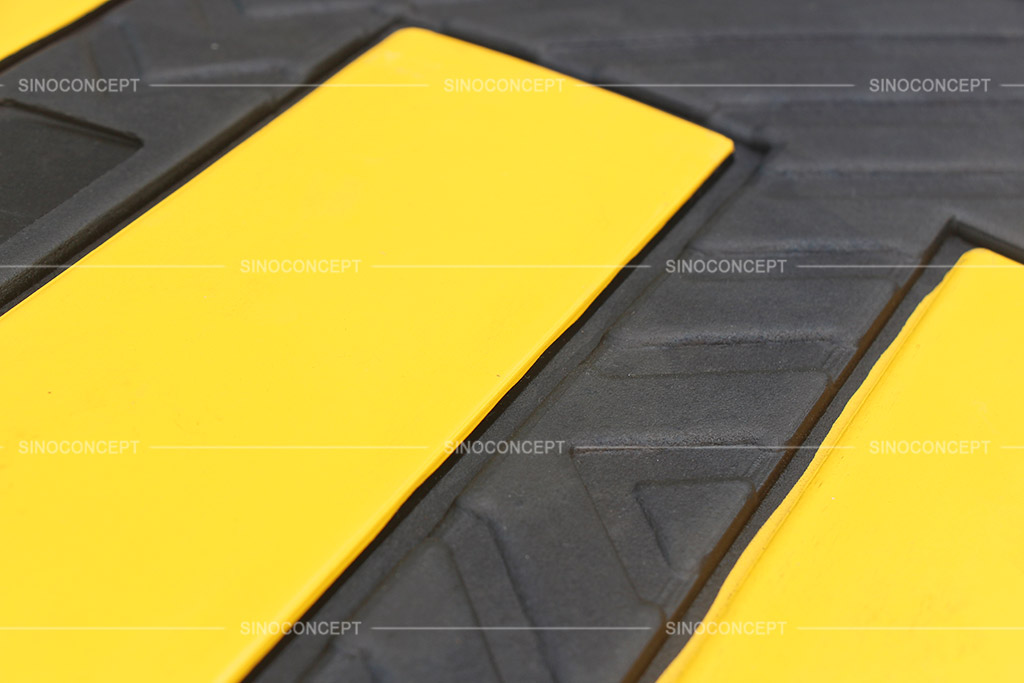
You have already read a good part of this article, 👀
We've
got the impression that you like it. 🙂
👇🏻
IF YOU ARE LOOKING TO WORK DIRECTLY WITH A MANUFACTURER,
FEEL FREE TO CONTACT US. WE ARE VERY HAPPY TO HELP!
Area
You cannot install speed humps anywhere. They should only be on city streets where the speed limit is around 30 mph. In such cases, speed humps can warn motorists to slow their vehicles. They are much more suited for residential areas rather than highways.
Furthermore, you cannot install them within 20 meters of the railroad and 25 meters of the bridge.
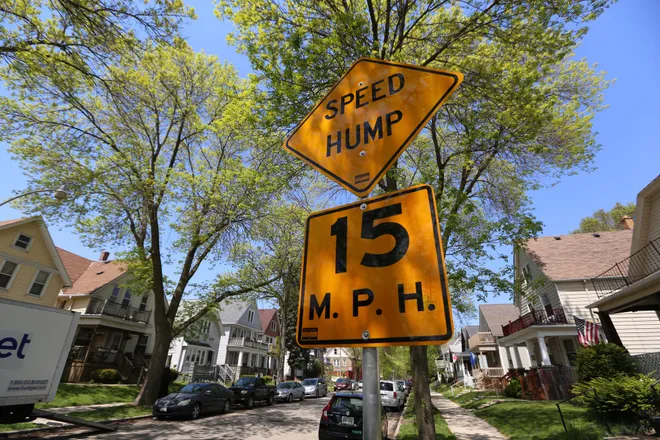
Placement
In some circumstances, you cannot join them together, and spacing is recommended. For example, there must be at least a 10-meter difference in a single-car parking space aisle, ensuring steady traffic flow.
There are spacing requirements for pedestrians and wheelchair traffic as well. At least one meter of travel space must be in any pedestrian zone, ensuring that people with disabilities can easily cross it.
Temporary/permanent designs
Many speed humps are now available in a modular interlocking design, allowing you to add segments to increase the length of the speed hump. It’s very convenient because speed humps are available in sections.
You can add as many sections as possible to meet the road’s length. However, each segment must be at least 250 mm and have alternating colours. Only the end caps can be 210 mm, which are essential parts that provide an aesthetic finish to road humps.
With the temporary design, you can unfasten the bolts and remove the speed hump when it’s unneeded, a benefit that may otherwise not be possible with permanent speed humps.
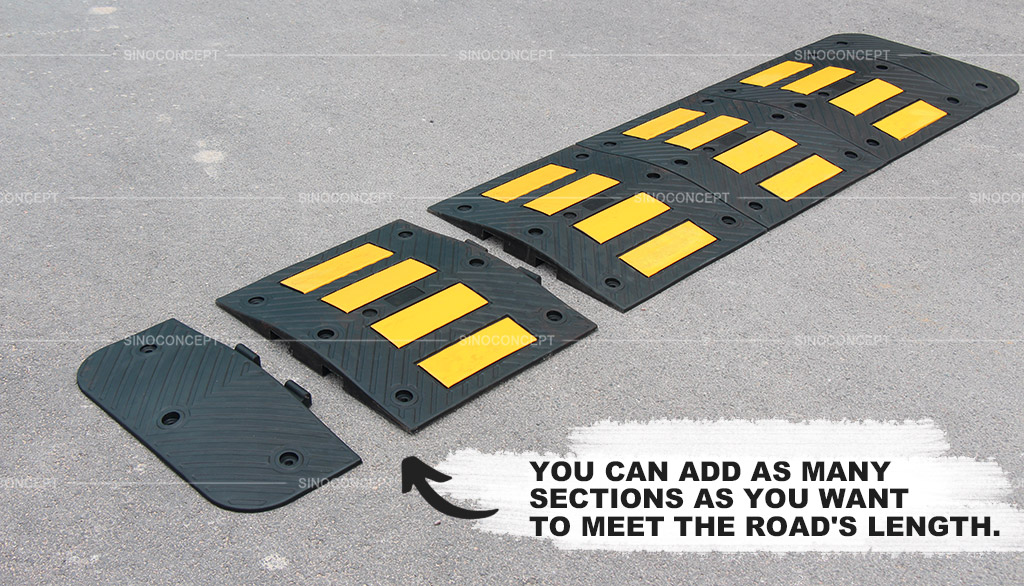
Material of speed humps
Speed humps can be made from several different materials. While it’s not an important consideration for the design criteria, material gives shape to speed breakers. Since different materials are used to create speed humps, it’s essential to know about them when designing a suitable speed hump.
Some of the most valuable speed hump materials include:
- Rubber
- Plastic
- Concrete
Rubber speed humps are one of the most versatile and durable tools out there. Rubber is suitable for any surface, whether it’s asphalt pavement or a concrete road. Vulcanized rubber is solid and difficult to deform.
Therefore, it can withstand high loads of different vehicles. Furthermore, rubber speed breakers don’t create a lot of traffic noise since they have an anti-slip feature which is bicycle friendly.
Plastic is another material out there. It’s also one of the most robust materials that come at a very cheap cost; that’s a plus. Its tensile strength allows it to withstand even heavy emergency vehicles such as buses, fire trucks, and ambulances.
Recycled PVC plastic also has abrasive resistance that doesn’t cause vehicular damage. You can also purchase them in various shiny colours, making them easier to spot in dark surroundings. However, it can fade away with time.
Concrete is another conventional measure for creating speed breakers. It’s known for its durability and heavy strength, aggressively preventing vehicles from driving at a high dynamic speed.
However, it may cause vehicular damage and create high-pitched noise, creating discomfort for property owners. It can also flatten or chip away with time, requiring frequent maintenance.

Supporting traffic calming measures
Meeting the design criteria for speed hump is essential. But whatever speed hump you install will be incomplete without additional traffic control devices in place.
Some of the additional practical measures include:
- There can be horizontal deflection tools such as curbs, bollards, rumble strips, and pavement markings to change the road design and discourage speeding.
- Signs and markings are also essential. Signages such as street, stop, speed limit, and traffic signs can warn motorists about the speed breakers ahead, making them slow down.
- Traffic police enforcement may also come in handy, where they can issue fines to vehicles breaking traffic rules and overlooking regulatory signs. Furthermore, traffic barriers, roundabouts, and traffic cones can regulate traffic volume.
- There can even be public education campaigns and commercials regarding traffic control signs and traffic signals, enabling the public to follow the road signs and avoid driving recklessly.
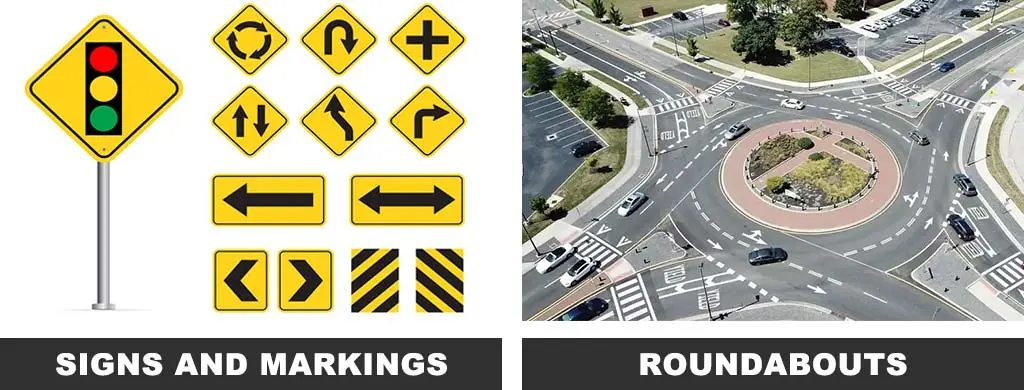
Conclusion
Fulfilling the design criteria for speed humps is important since it’s a requirement by law. Still, you have so many choices of speed humps to choose from. Be it a large speed hump or one made from any of the three materials listed above, you can choose any according to your preference.
You are at the right place if you’re a municipal officer looking to purchase speed humps with specific dimensions and designs. At Sino Concept, we provide several traffic control devices which can be manufactured according to your preferences.
Check out our vast offerings if you want to purchase one for your city street or neighbourhood. Browse through our product selection and find the traffic tool that fulfils your needs.
👇🏻
IF YOU ARE LOOKING TO WORK DIRECTLY WITH A MANUFACTURER,
FEEL FREE TO CONTACT US. WE ARE VERY HAPPY TO HELP!
To learn more, we advise you to refer to the following pages:

